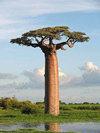线形山茱萸科树皮解剖:一般概述
IF 0.6
4区 生物学
Q4 PLANT SCIENCES
引用次数: 0
摘要
具有线状习性的物种占大戟科植物多样性的一半。最近的分子系统发育研究为Bignonieae和Tecomeae s.s.的整个藤本植物谱系的新界定提供了基础,其中只有单系分类群被确认。然而,一些分支仍然没有良好的形态突触。为了寻找分类潜力的特征,我们收集、切片和分析了八哥科八哥属的83种树皮,涵盖了目前已知的三哥科三哥属的所有20个属,以及三种最广泛种植的三哥科三哥属。根据它们最新的系统发育假设和分类,对两个部落的主要谱系进行了详细的树皮描述。通过解剖研究,我们确定了藤本植物大枝或特定属的19种潜在的突触形态,例如在Fridericia Mart成员中发现的纤维韧皮部。修订L.G.Lohmann和盟友的分支,在Pleonotoma Miers的规则韧皮部中独家存在硬核,以及Manaosella J.C.Gomes的放射状伸长纤维的存在,等等。利用这些特征的组合,我们能够产生第一个树皮密钥来识别线形大戟科的属。我们的工作强化了树皮特征对更深层次理解分类群之间的分类和系统发育关系的重要性。简历Anatomie de l 'ecorce des紫葳科lianescentes:简介generique。鸢尾草科植物,鸢尾草属植物。研究人员提出了一种新的研究方法,即在不同的群体中使用不同的方法,例如在不同的群体中使用不同的方法,例如在不同的群体中使用不同的方法,例如在不同的群体中使用不同的方法,例如在不同的群体中使用不同的方法,例如在不同的群体中使用不同的方法,例如在不同的群体中使用不同的方法,例如在不同的群体中使用不同的方法。融洽的关系可以减少人际交往。Nous avons pu rereatre3 19 synapomorphies potentielles de la tige和de l' acricece / l' acricece / l' acricece / l' acricece / l' acricece - le phlome纤维breux de Fridericia Mart。修订L.G.Lohmann et alliims, la pracsience ence exclusive de sclsisians, le phlodeme me acsiriere de Pleonotoma Miers,以及la m.a.c.g ome。从结构特征和结构特征的结合上看,首先要确定的是,在确定的范围内,要确定的是,在确定的范围内,要确定的是,在确定的范围内,要确定的是,在确定的范围内,要确定的是,在确定的范围内,要确定的范围。所有的研究结果都证实了“解剖学”、“本文章由计算机程序翻译,如有差异,请以英文原文为准。
Bark anatomy of lianescent Bignoniaceae: a generic synopsis
ABSTRACT Species with lianescent habit account for half of the diversity of Bignoniaceae. Recent molecular phylogenetic studies have provided the basis for new circumscriptions of entire liana lineages within tribes Bignonieae and Tecomeae s.s., where only monophyletic taxa are recognized. However, some clades remain without good morphological synapomorphies. In search of features of taxonomic potential, we collected, sectioned, and analyzed the bark of 83 lianescent species of the Bignoniaceae, covering all 20 genera from tribe Bignonieae currently recognized, plus three of the most widely cultivated lianas of Tecomeae s.s. Detailed bark descriptions are given to major lineages within both tribes, following their most recent phylogenetic hypotheses and classifications. Our anatomical studies allowed us to identify 19 potential synapomorphies for large clades or specific genera of lianas, such as the fibrous phloem found in members of the Fridericia Mart. emend L.G.Lohmann and allies clade, the exclusive presence of sclereids in the regular phloem of Pleonotoma Miers, and the presence of radially elongated fibers in Manaosella J.C.Gomes, among others. Using a combination of features, we were able to produce the first bark key to identify genera of lianescent Bignoniaceae. Our work reinforces the importance of bark features for a deeper understanding of taxonomic and phylogenetic relationships among taxa. RÉSUMÉ Anatomie de l'écorce des Bignoniaceae lianescentes: synopsis générique. La moitié des Bignoniaceae sont des espèces à port lianescent. Des travaux récents ont proposé de nouveaux découpages dans les groupes entièrement lianescents, notamment pour les tribus des Bignonieae et des Tecomeae s.s. Nus avons ici rassemblé, sectionné et analysé les tiges de 83 Bignoniaceae grimpantes, comprenant tous les genres de Bignonieae et trois autres de Tecomeae s.s. largement cultivées, afin de trouver des caractères d'intérêt taxonomique permettant de décrire précisément la diversité anatomique de leurs écorces, en rapport avec les dernières phylogénies. Nous avons pu reconnaître 19 synapomorphies potentielles de la tige et de l'écorce à l'échelle de clades ou de genres lianescents, telles que – entre autres – le phloème fibreux des Fridericia Mart. emend L.G.Lohmann et alliés, la présence exclusive de sclérites dans le phloème régulier de Pleonotoma Miers, ainsi que de fibres étirées radialement chez Manaosella J.C.Gomes. La combinaison de ces caractères nous a permis de construire une première clé d'identification des écorces pour la détermination générique des Bignoniaceae lianescentes, même en l'absence de toute autre donnée morphologique. Nos résultats confirment l'importance de l'anatomie de l'écorce dans la compréhension de la taxonomie et de la phylogénie, et donc de la diversification.
求助全文
通过发布文献求助,成功后即可免费获取论文全文。
去求助
来源期刊

Adansonia
生物-植物科学
CiteScore
1.30
自引率
12.50%
发文量
24
审稿时长
>12 weeks
期刊介绍:
Adansonia is a fast-track and peer-reviewed journal of plant biology, devoted to the inventory, analysis and interpretation of vascular plants biodiversity. It publishes original results, in French or English, of botanical research, particularly in systematics and related fields: morphology, anatomy, biology, ecology, phylogeny, biogeography, etc. All articles published in Adansonia are compliant with the different nomenclatural codes. A copyright assignment will be signed by the authors before publication.
 求助内容:
求助内容: 应助结果提醒方式:
应助结果提醒方式:


